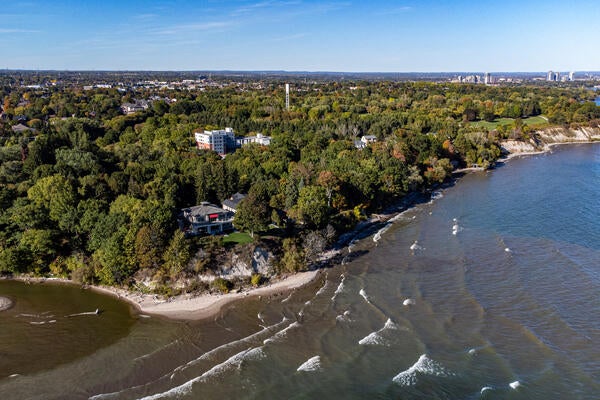
Do you want more control over your energy costs?
Homeowners and businesses will automatically get the information they need to cut costs with an innovative tool that’s also good for the environment.

Homeowners and businesses will automatically get the information they need to cut costs with an innovative tool that’s also good for the environment.
By Bob Burtt Communications and Public AffairsYou’ve left the home not knowing where to set the thermostat so that when your spouse returns from running errands in a couple of hours, the living room will be cozy and comfortable.
Don’t sweat it. Your home now ‘regulates itself’ – you have ‘set and forget’ and all of your family’s energy service needs are continuously satisfied.
That’s possible now with the energy hub management system, a project led by the University of Waterloo with participation from the Ontario Centres of Excellence, Hydro One Networks Inc., Energent Inc. (Waterloo), Milton Hydro Distribution Inc. and the Ontario Power Authority.
Collecting information
 “Essentially, this is a hardware-software optimization tool that allows home and business owners to be managers of their energy use in ways that makes sense to them,” says Ian Rowlands, professor in the Department of Environment and Resource Studies.
“Essentially, this is a hardware-software optimization tool that allows home and business owners to be managers of their energy use in ways that makes sense to them,” says Ian Rowlands, professor in the Department of Environment and Resource Studies.
A sophisticated monitoring device collects information about how much energy is being used, where in the home or building it is being used and how much it costs.
Once that information is available, the home, farm or factory owner can enter information about when and how warm he or she wants the building to be. Using that information, a computer will design a schedule for energy consuming appliances to be used in a way that meets the demand at the lowest possible cost.
For example, it might set the furnace higher when the family is home watching TV and lower when they expect to be at school or work.
Big savings
The system is being tested in 23 homes in Milton, and several businesses in Southern Ontario. While it is too early to document energy savings, work in the lab indicates there could be cost savings in the order of 20 to 30 percent.
“I think it”s an important tool towards a sustainable energy future and provides opportunities for a lot of entities in Ontario and across Canada. Canada is well placed to be an energy power. We have a vast array of natural resources and an advanced information technology sector.”
Rowlands sees Ontario and Canada as a living laboratory where advanced energy systems are developed, providing potential for export.
“We can develop opportunities that would be useful to the world and at the same time provide sustainability benefits and economic opportunities, he says.

Read more
Shop Canadian this holiday season with festive porch plants, fashion-forward apparel, craft spirits and more from Waterloo entrepreneurs

Canada's coasts face increasing flooding and erosion with climate change.
Read more
Canada must act to protect the longest marine and freshwater coastlines in the world from the surge of climate change

Read more
From transforming solutions for homeownership to advancing health care interventions, Waterloo talent continues to disrupt industries and drive change
The University of Waterloo acknowledges that much of our work takes place on the traditional territory of the Neutral, Anishinaabeg, and Haudenosaunee peoples. Our main campus is situated on the Haldimand Tract, the land granted to the Six Nations that includes six miles on each side of the Grand River. Our active work toward reconciliation takes place across our campuses through research, learning, teaching, and community building, and is co-ordinated within the Office of Indigenous Relations.